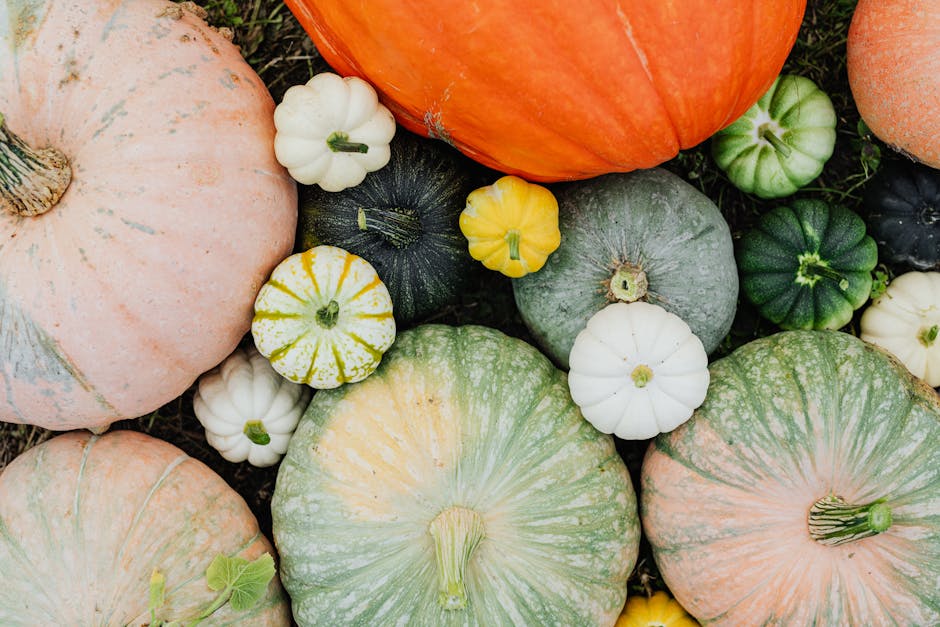Picking the perfect squash comes down to an art form rather than just a simple farm chore. Squash, a versatile and nutritious vegetable, is often the star of various dishes, from hearty soups to enlivening salads. As such, understanding its harvest time is crucial to get the tastiest result. More to it, time alone won’t ensure a perfect pick. There are various factors such as recognizing the signs of readiness, using the right tools, applying effective harvesting techniques, ensuring post-harvest care for longevity, and avoidance of certain mistakes. Let’s walk through all these aspects to help you reap a bumper squash harvest.
Understanding When Squash is Ready for Harvest
Color, size, skin texture, and stem dryness- each can be telling indicators of whether a squash is ready for harvest or not. Generally, when the hue of a squash transitions from bright to a dull color tone, it is a good sign of maturity. Size can also be an indicator, but it may vary with different squash varieties.
As the squash matures, its skin hardens and resists puncture when pressed with a fingernail. Similarly, a dried and shriveled stem indicates the fruit has completed its growth cycle. However, it’s important to harvest at just the right time as both premature and overly ripe squash can compromise quality and taste.
Selecting the Right Tools for Squash Harvesting
Effective harvesting isn’t just about recognizing ripe squash but also preventing damage when picking them off the plant. Using the right tools can help maintain the integrity of this robust yet delicate fruit. Sharp pruning shears or a knife, sturdy gloves, and a garden bucket form the primary arsenal in your squash harvesting journey.
But owning these tools isn’t enough; proper upkeep and safe usage are equally important. Regularly rinsing and sharpening your pruning shears or knife prevents disease transmission and easily cuts through the squash stem, minimizing damage. Gloves protect your hands from the often prickly squash vines and prevent accidental cuts. A sturdy bucket provides a safe vessel for your bounty, preventing bruising or squashing before you even get to your kitchen!
Harvesting Squash: Step-by-Step Guide
The harvest process may seem as easy as plucking a fruit, but there’s a technique to it. Harvesting squash begins with identifying a ripe one, as discussed earlier. Afterwards, using your carefully maintained pruning shears or knife, cut the squash off the vine, ensuring a neat cut without damaging the fruit.
The process of cutting vs. twisting squash off the vine differs greatly. While cutting offers a clean break and lessens potential damage to both the squash and plant, twisting can often lead to injuries if not done properly. Experiment to see which one feels more comfortable and yields the best results for you. Just remember, this is a moment that combines insight, experience and personal tact; enjoy it!
Post-Harvest Handling and Storage of Squash
Once harvested, your squash aren’t quite ready for the dinner table or storage just yet. They need proper post-harvest handling to ensure maximum freshness and longevity. The first step in this process is curing the squash. Curing not only enhances their flavor but also extends their shelf life. Simply leave the squash in a warm, well-ventilated area for about 10 days to cure.
When storing, the conditions need to be just right. The ideal storage for squash includes a cool (50-55°F), dry, and well-ventilated space. Contrary to popular belief, the refrigerator isn’t always the best place for your squash. It can often be too cold and damp, which may lead to rot!
Remember, proper handling and storage practices significantly impact the quality of your squash, and consequently, your culinary creations.
Mistakes to Avoid When Harvesting and Storing Squash
The journey to perfect squash harvest isn’t without potential pitfalls. Common mistakes range from harvesting too early or too late to improper storage conditions. Each mistake adversely affects the quality of the squash.
Here are a few common errors to avoid:
- Harvesting too early or too late: As mentioned earlier, premature or overly mature squash can greatly compromise taste and culinary versatility.
- Poor tool selection: Using dull tools can damage the squash and plant, paving the way for disease and rot.
- Inadequate post-harvest handling: Skipping steps like curing can result in shorter lifespan and lackluster flavor.
- Incorrect storage: Too much moisture, light or adverse temperatures can spoil your squash, making them unfit for consumption.
Just remember, each step of the process is important and contributes to the quality of the final product, your delicious squash!
Mastering the art of squash harvesting takes practice, patience, and a touch of finesse. This guide lends you the expertise needed to navigate the journey, ensuring a bountiful, wholesome yield. Armed with the right knowledge, you’re just a few steps away from enjoying the perfect squash!
Key Takeaway:
- Understanding the signs of a fully matured squash, such as the transition in color, hardening of skin and stem dryness is crucial towards picking perfect squash.
- Selecting the right harvest tools and understanding their maintenance, safe usage is very important.
- A step-by-step squash harvesting procedure can enrich an individual’s squash picking experience.
- Post-harvest handling and storage actions significantly impact squash freshness and longevity.
- Awareness about common mistakes in the harvesting and storage process is key to their avoidance and ensuring optimal squash quality.
Remember, harvesting perfect squash is an art that can be mastered with time, patience, and experience. Armed with the right knowledge and tools, every gardener can enjoy a fruitful squash harvest. Happy harvesting!
FAQs
Q: What are the best tools for squash harvesting?
A: The most essential tools for squash harvesting include sharp pruning shears or a knife to effectively cut the vines, gloves to protect from prickly vines and accidental cuts, and a garden bucket to collect and transport your squash without causing any damage.
Q: How can I check if my squash is ready to be harvested?
A: Indicators of squash maturity include a transition from bright to a dull color tone, hardening of skin that resists puncture when pressed with a fingernail, and a dried and shriveled stem. Specific signs may vary with different squash varieties.
Q: What is the correct way to cure squash after harvesting?
A: Curing squash involves leaving them in a warm, well-ventilated area for about 10 days. This process enhances their flavor and extends their shelf life.
Q: What are some common mistakes to avoid in the squash harvesting process?
A: Common mistakes include harvesting too early or too late, using incorrect or poorly maintained tools, skipping important post-harvest handling steps like curing, and storing squash under incorrect conditions of humidity, light, and temperature.
Q: How should I store my squash after harvest?
A: Store your squash in a cool (50-55°F), dry and well-ventilated space. Contrary to popular belief, refrigerators can often be too cold and damp, causing the squash to rot!
We hope this guide has been helpful! Don’t forget to share this article with fellow gardening enthusiasts and explore more posts on our website.






